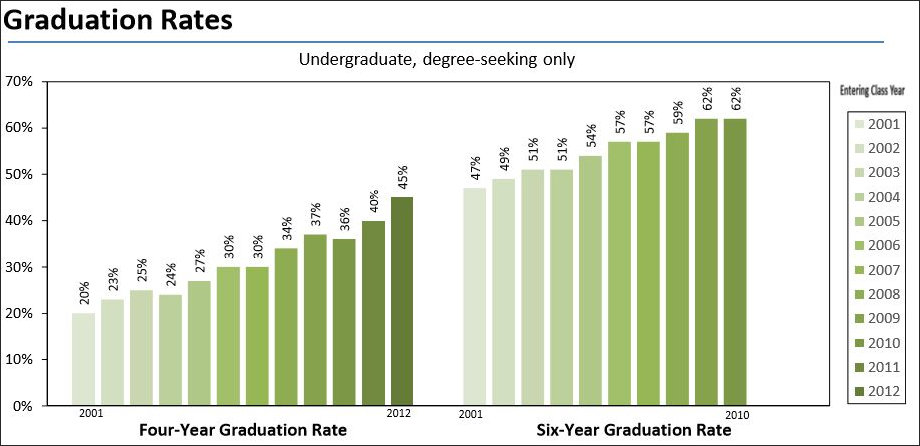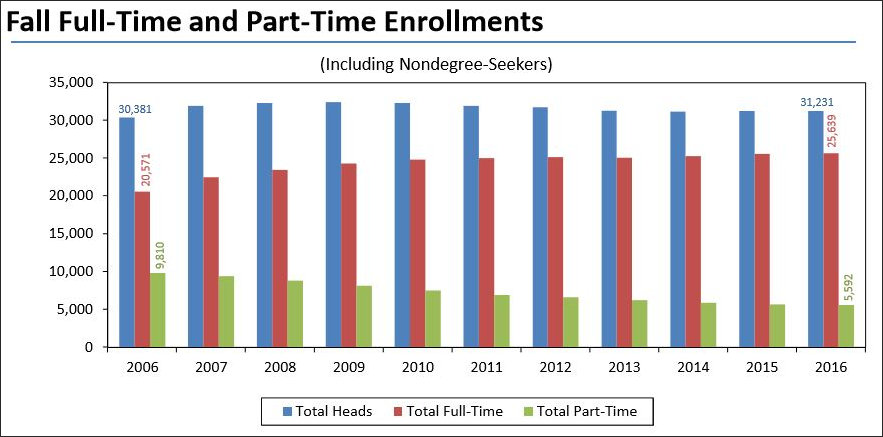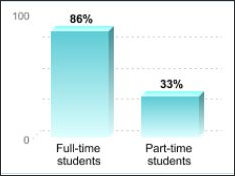
Virginia Commonwealth University 4- and 6-year graduation rate. (Click for larger image.)
However skeptical I’ve been about Virginia Commonwealth University’s aggressive tuition increases, I’ve always given the university credit for one thing: improving the graduation rate of its students. As seen in the chart above, the four-year and six-year graduation rate of undergraduate degree seekers increased steadily between 2001 and 2010.
Graduation rate is a crucial metric of university performance in an era of increased student indebtedness and rising defaults on student loans — no more so than at VCU where 51% of students receive financial assistance from Uncle Sam. Debt accumulation is disastrous to students who fail to graduate and acquire the means by which to pay off their loans. When such a fate befalls millions of students across the country, personal misfortune morphs into a social and economic crisis.
I’ve often wondered how VCU has improved its graduation rates. Is the university more selective about admitting students likely to complete their courses of study? Has it made more counseling resources available to students? Has it bolstered financial aid to lower-income students?
Hopefully, I’ll find the time to answer those questions. Until then, I think I have uncovered an important contributor to VCU’s improved numbers. By transforming itself from a “commuter college” into a residential institution, VCU has boosted the percentage of full-time students and reduced the percentage of part-time students, as seen in the chart below:

 By definition, students who take fewer courses will take longer to complete their degrees than students who take full course loads. Also, they are less likely to persist in their studies. Indeed, data from the National Center for Educational Statistics (NCES) shows that 86% of full-time students at VCU who initiated their studies in the fall of 2014 returned in the fall of 2015 compared to only 33% of part-time students.
By definition, students who take fewer courses will take longer to complete their degrees than students who take full course loads. Also, they are less likely to persist in their studies. Indeed, data from the National Center for Educational Statistics (NCES) shows that 86% of full-time students at VCU who initiated their studies in the fall of 2014 returned in the fall of 2015 compared to only 33% of part-time students.
Clearly, the shift to a full-time student body accounts for much of VCU’s undergraduate degree-completion rate. It should be possible to estimate from these numbers what percentage of the gain in degree completions can be attributed to the changing composition of the student body, but I don’t have the mathematical chops to do it. (Pretty sad, huh?) If any readers are up to the challenge, please let me know.


